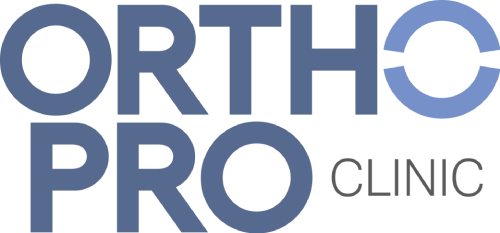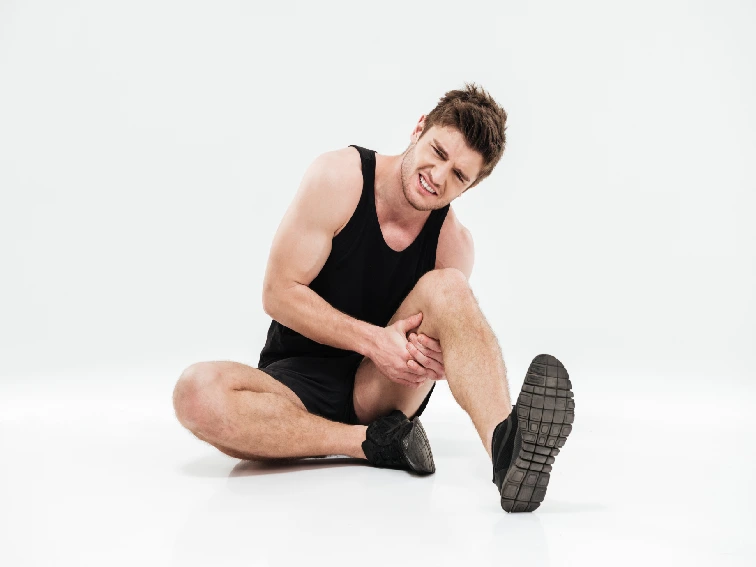ACL surgery in Hyderabad | Dr. Praharsha Mulpur
The anterior cruciate ligament (ACL) is a crucial ligament in the knee joint that provides stability and helps in the proper functioning of the knee. However, ACL injuries are quite common, especially among athletes and individuals involved in sports activities. Understanding the causes, symptoms, treatment options, and prevention strategies for ACL injuries is essential for both athletes and the general population. In this article, we will delve into these aspects in detail.
What is an ACL Injury?
An ACL injury refers to the tearing or spraining of the anterior cruciate ligament, which is located in the knee joint. It commonly occurs during sports activities that involve sudden stops, changes in direction, or pivoting movements. ACL injuries can range from mild sprains to complete tears, affecting the stability and mobility of the knee.
Causes of an ACL Injury
ACL injuries can happen due to various reasons, including:
1. Sudden Stops and Direction Changes
Activities that require sudden stops or changes in direction, such as basketball, soccer, and skiing, put immense stress on the knee joint. These abrupt movements can lead to ACL injuries.
2. Landing Improperly
Landing from a jump incorrectly, especially with poor knee alignment, can increase the risk of ACL injury. Athletes who participate in sports like gymnastics and basketball are particularly prone to this type of injury.
3. Direct Impact or Collision
A direct blow or collision to the knee, often seen in contact sports like football and rugby, can cause significant damage to the ACL.
4. Muscle Imbalances and Weakness
Muscle imbalances, especially between the quadriceps and hamstrings, can place excessive strain on the ACL. Weak muscles can lead to poor knee stability, increasing the likelihood of ACL injury.
5. Previous ACL Injury
Having a history of ACL injury increases the risk of re-injury, especially if proper rehabilitation and strengthening exercises were not performed.
Symptoms of ACL Injury
The following symptoms may indicate an ACL injury:
1. Sudden Pain and Swelling
Individuals often experience immediate pain and swelling in the knee following an ACL injury. The swelling may occur within a few hours and can be accompanied by a feeling of instability.
2. Popping Sound or Sensation
At the time of injury, a popping sound or sensation may be felt in the knee joint. This is an indication of a significant ACL tear.
3. Limited Range of Motion
ACL injuries can restrict the range of motion in the knee joint. Individuals may find it challenging to fully straighten or bend their knees.
4. Knee Instability
A feeling of knee instability, as if the knee is giving way or unable to support the body’s weight, is a common symptom of an ACL injury.
5. Difficulty in Walking or Weight-Bearing
ACL injuries can make walking or bearing weight on the affected leg painful and difficult.
Diagnosis of ACL Injury
To diagnose an ACL injury, a healthcare professional will conduct a thorough examination of the knee, review the individual’s medical history, and order additional tests if necessary. These tests may include:
X-rays: X-rays can help rule out any fractures or bone injuries in the knee.
MRI (Magnetic Resonance Imaging): An MRI scan provides detailed images of the knee’s soft tissues, allowing for an accurate assessment of ACL tears or other ligament injuries.
Treatment Options for ACL Injury
The treatment for ACL injury depends on various factors, such as the severity of the injury, the individual’s activity level, and their overall health. The treatment options may include:
1. Surgical Intervention
ACL surgery in Hyderabad: In cases where the ACL is completely torn or if the individual wants to return to high-demand sports, surgical reconstruction of the ligament may be recommended. This procedure involves using a graft to replace the torn ACL.
2. Non-Surgical Treatment
For individuals with partial tears or those who may not require surgery, non-surgical treatment options can be considered. These may include physical therapy, rehabilitation exercises, and bracing to support the knee joint.
Rehabilitation and Recovery
After an ACL injury, a comprehensive rehabilitation program is essential for proper recovery and to regain strength and stability in the knee joint. The rehabilitation process may include:
Physical therapy exercises to improve range of motion, strength, and flexibility.
Balance and proprioception training to enhance knee stability.
Gradual return to sports-specific activities under the guidance of a healthcare professional.
Prevention Strategies for ACL Injury
While it may not be possible to prevent all ACL injuries, several strategies can help reduce the risk:
1. Strengthening Exercises
Regularly engaging in exercises that target the muscles around the knee, such as the quadriceps and hamstrings, can improve knee stability and reduce the risk of ACL injuries.
2. Proper Technique and Landing Mechanics
Learning and practicing proper techniques for sports activities, including correct landing mechanics, can minimize the stress on the knee joint and reduce the chances of ACL injury.
3. Warm-up and Stretching
Performing a thorough warm-up routine and stretching before engaging in sports or physical activities can prepare the muscles and joints for the demands of the activity, reducing the risk of injury.
4. Using Protective Equipment
Wearing appropriate protective equipment, such as knee braces or padding, can provide additional support and reduce the impact on the knee during sports activities.
5. Rest and Recovery
Allowing adequate rest and recovery time between intense training sessions or competitions can help prevent overuse injuries, including ACL injuries.
Returning to Sports After an ACL Injury
Returning to sports after an ACL injury requires careful planning and guidance from healthcare professionals. The process typically involves the following steps:
Assessment and Rehabilitation: The injured individual undergoes a thorough assessment to determine their readiness for sports-specific activities. Rehabilitation exercises and training are tailored to their specific needs.
Gradual Progression: The individual gradually increases the intensity and complexity of their training under the supervision of healthcare professionals, focusing on strength, balance, and agility.
Sports-Specific Training: Once the individual has regained sufficient strength and stability, they can begin sports-specific training to relearn movement patterns and regain confidence.
Return to Competition: The final stage involves a gradual return to competitive play, ensuring the knee is fully rehabilitated and the individual is physically and mentally prepared.
ACL Injury in Children and Adolescents
ACL injuries in children and adolescents require special consideration due to their ongoing growth and development. Treatment approaches may differ, considering factors such as skeletal maturity and the potential impact on future growth.
ACL Injury and Gender Differences
Research suggests that females are more prone to ACL injuries than males. Anatomical, hormonal, and neuromuscular factors may contribute to this gender disparity. Understanding these differences can aid in implementing targeted prevention and training programs.
Long-Term Effects of ACL Injury
While many individuals can recover well from ACL injuries with appropriate treatment and rehabilitation, long-term effects may still be present. These can include a higher risk of developing osteoarthritis in the knee joint later in life.
The Role of Physical Therapy in ACL Injury
Physical therapy plays a crucial role in the treatment and rehabilitation of ACL injuries. Skilled therapists design individualized exercise programs to restore strength, range of motion, and functional abilities.
Surgical Intervention for ACL Injury
ACL surgery in Hyderabad: Surgical intervention for ACL injury aims to reconstruct the torn ligament using a graft. Advances in surgical techniques and rehabilitation protocols have improved outcomes and helped individuals return to their previous level of activity.
Non-Surgical Treatment for ACL Injury
Non-surgical treatment options for ACL injury may be considered for individuals with partial tears or those with lower activity levels. Physical therapy, exercise programs, and bracing can help manage symptoms and restore knee function.
Bottom Line
ACL injuries are common and can significantly impact an individual’s mobility and quality of life. Understanding the causes, symptoms, treatment options, and prevention strategies is essential. By implementing proper techniques, engaging in strengthening exercises, and seeking appropriate medical care, individuals can reduce the risk of ACL injuries and promote long-term knee health.
FAQs
1. Can ACL injuries heal without ACL surgery in Hyderabad?
In some cases, non-surgical treatment options, such as physical therapy and rehabilitation exercises, can help manage ACL injuries. However, the decision depends on the severity of the injury and the individual’s activity level and goals.
2. How long does it take to recover from ACL surgery?
The recovery time after ACL surgery can vary depending on the individual, the extent of the injury, and the rehabilitation process. It generally takes several months for individuals to regain full strength and stability in the knee.
3. Are ACL injuries more common in certain sports?
ACL injuries are more prevalent in sports that involve sudden stops, changes in direction, and pivoting movements, such as basketball, soccer, skiing, and football.
4. Can ACL injuries be prevented?
While ACL injuries cannot be entirely prevented, implementing preventive measures such as strengthening exercises, proper technique, warm-up routines, and using protective equipment can reduce the risk.
5. Can you return to sports after an ACL injury?
With appropriate treatment, rehabilitation, and guidance from healthcare professionals, many individuals can successfully return to sports after an ACL injury. The process involves a gradual progression of training and sports-specific exercises.
To know more about ACL surgery in Hyderabad at KIMS hospitals, meet Dr. Praharsha Mulpur.


